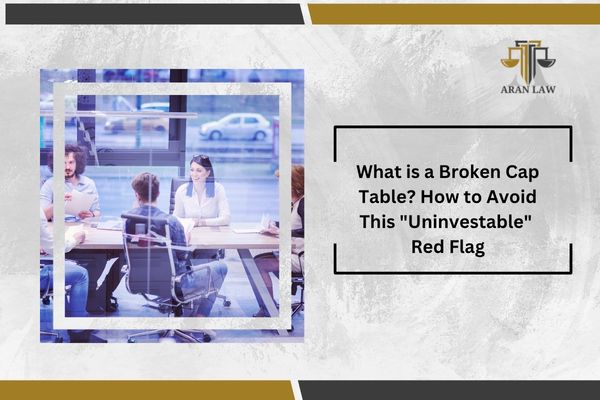Your Cap Table Isn’t Just a Spreadsheet—It’s Your Startup’s Foundation
Think of your company’s capitalization table (cap table) as its foundation. It’s the official record of who owns what percentage of your company. When it’s clean, simple, and logical, it provides a stable base for growth. But when it’s messy, confusing, or lopsided, that foundation cracks.
Investors call this a “broken cap table,” and it’s one of the fastest ways to have your startup deemed “uninvestable.” During due diligence, your cap table tells a story about your foresight, discipline, and business acumen. A broken one tells a story investors don’t want to be a part of.
Also Read: A Founder’s Guide to Preventing Destructive Co-Founder Conflict
What Exactly is a “Broken Cap Table”?
A broken cap table is an equity ownership structure that is so problematic it scares away potential investors. The issues can range from simple sloppiness to fundamental flaws in how your company’s ownership is distributed.
At best, these mistakes will cost you significant time and legal fees to fix. At worst, they will kill a funding deal and leave you and your investors unsure of who truly owns the company.
Common Cap Table Mistakes That Scare Away Investors
Here are the most common pitfalls that lead to a broken cap table and send VCs running for the door.
Pitfall 1: Not Enough “Skin in the Game” (Founder Over-Dilution)
This is the cardinal sin of cap table management. It happens when founders give away too much equity too early, leaving them with only a tiny share of the company they are building.
- Why it’s a red flag: Investors need to know that the founders have enough personal ownership—enough “skin in the game”—to stay motivated through the hard times and drive the company toward a profitable exit. If you only own 10% of your company before the first major funding round, what’s your incentive to see it through? It also leaves very little room on the cap table for key future hires and new investors.
Pitfall 2: Too Many Cooks in the Kitchen (Overly Complex Structure)
In the early days, it can be tempting to give small amounts of equity to friends, family, advisors, and early believers. But this can quickly spiral out of control.
- Why it’s a red flag: A cap table with dozens of small shareholders is a logistical nightmare. Every time a key corporate decision requires shareholder approval, you’ll have to chase down numerous signatures. It complicates communication and slows down decision-making at a stage when speed is critical.
Pitfall 3: The “Who Owns What?” Nightmare (Informal Agreements)
This happens when equity is promised on a handshake or a casual side deal without proper legal documentation.
- Why it’s a red flag: Vague or undocumented promises create massive uncertainty. During due diligence, investors need absolute clarity on ownership. If there are questions about who owns what, or if large chunks are owned by inactive parties (like a ghost co-founder), the deal will slow to a crawl or die completely. No VC will invest if they aren’t 100% sure what they are actually buying into.
How to Build a Clean and Investable Cap Table
Building and maintaining a clean cap table from day one is a non-negotiable part of good corporate governance. It shows discipline and protects your company’s future.
- Formalize Everything: This is the golden rule. Every single grant of equity, whether to a co-founder, employee, or advisor, must be documented in a formal, legal agreement. No exceptions.
- Keep It Simple: Resist the urge to create a complex ownership structure early on. A simple cap table with a small number of engaged stakeholders is stronger and more attractive to investors.
- Protect Your Equity: Be extremely cautious about giving away equity in the early days. Avoid early over-dilution by making sure any equity grants are tied to clear value and commitment, ideally through a vesting schedule.
- Stick to the Standards: There’s no need to reinvent the wheel. Use standard legal documents and vesting schedules (e.g., a 4-year vest with a 1-year cliff) for founders and employees. These are standards for a reason—they are fair and protect the long-term health of the company.
Also Read: Dead Equity, Dead Startup: The Critical Danger of a Ghost Co-Founder
Conclusion: Treat Your Equity Like Gold
Your company’s equity is its most valuable currency. Managing it with discipline isn’t just administrative work; it’s a core strategic function. A clean, logical cap table sends a powerful signal to investors that you are a serious, professional founding team that understands how to build a company for the long term.
Don’t let easily avoidable cap table mistakes jeopardize your startup’s future. Keep it clean, keep it simple, and keep your foundation strong.

